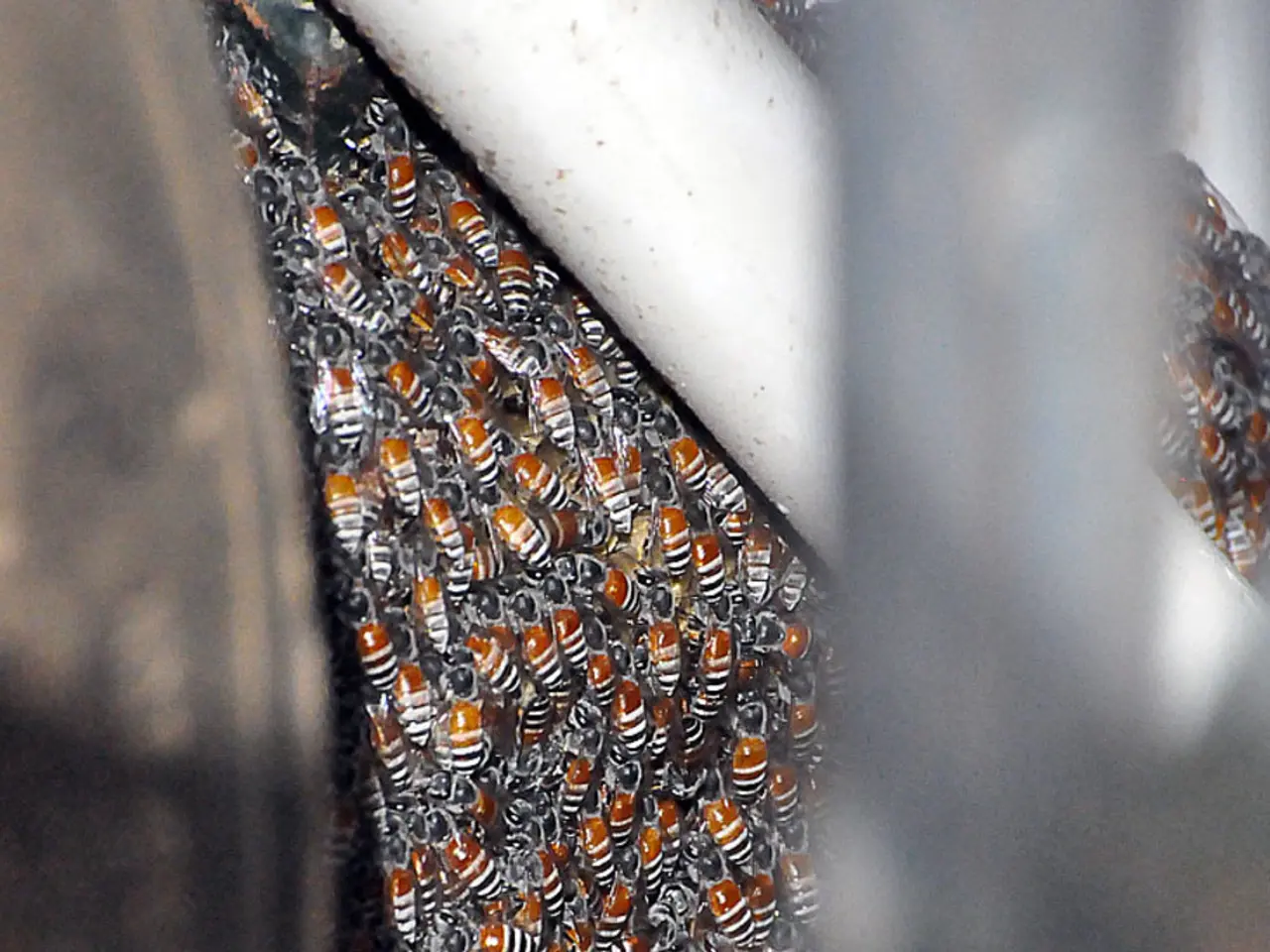With charitable contributions, beekeepers in Plön can commence operations
In the picturesque town of Plön, a unique educational initiative is blooming - the beekeeping project at Am Schiffsthal community school. This project, launched in 2024, is not about teaching students to keep bees, but rather about understanding sustainability and the crucial role of pollinators.
Led by Michael Wehrend from the local beekeeper association and science teacher Sascha Michaelis, the project, known as the Bee AG, has been a buzz of activity since its inception. A total of five beehives can now be found in the school garden, three of which are occupied by a colony each.
The project involves 16 fifth and sixth graders who are learning about bee biology, colony management, and the importance of pollinators in ecosystems. They have the opportunity to observe the process of future queens growing directly, a fascinating aspect of beekeeping that enhances their understanding of these fascinating insects.
The project has received support from various quarters. The Lions Club, along with students from higher grades, contributed to the Bee AG project through a service project and catering at Lions Club events and Plön's Schleswig-Holstein Music Festival concerts. Dirk Carstens, a Lions member and optician, organised an additional donation drive for the Bee AG at his shop during the Christmas season, adding 2000 euros to the project's funds.
With the donation of 4000 euros, the Bee AG can now purchase more beekeeper suits for the children, jars and labels for the honey, additional equipment, and sugar beet syrup for the winter. The goal for 2025 is to create two "swarms" by raising a new colony from a brood comb, with large cells indicating future queens growing inside.
The beekeeping project at Am Schiffsthal is an integral part of the school's sustainability curriculum, where German teacher Jørn Hinrichsen teaches connections between nature, climate, biodiversity, and species extinction. The project underscores the importance of youth engagement for the future of beekeeping and the environment.
As the project continues to grow, it is hoped that it will inspire more schools to adopt similar initiatives, fostering a greater understanding of sustainability and environmental awareness among young minds.
- Michael Wehrend and Sascha Michaelis, leading the Bee AG project, have incorporated environmental-science into the school's curriculum by using beekeeping as a learning tool, helping students understand the importance of pollinators and sustaining ecosystems.
- The home-and-garden gardening aspect of the Bee AG project is showcased through the school's community garden, where five beehives have been installed to support the project's mission.
- The project's success in engaging young minds with real-world science, particularly climate-change and its impact on pollinators, has inspired support from local organizations, such as the Lions Club, and communities, promoting sustainability and environmental awareness within the town of Plön.





